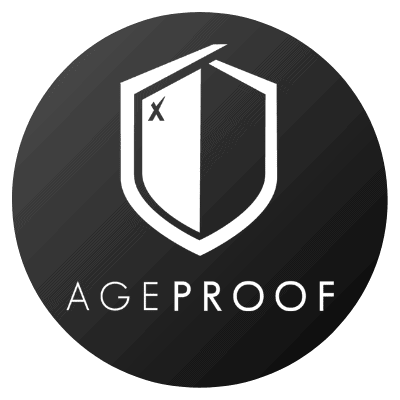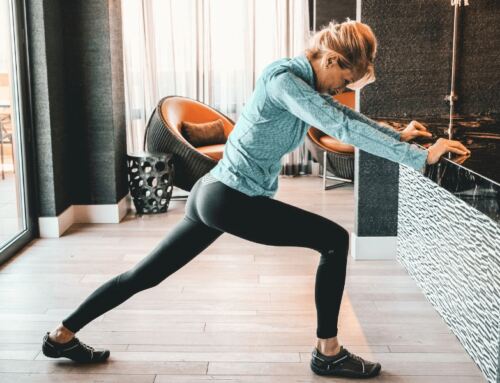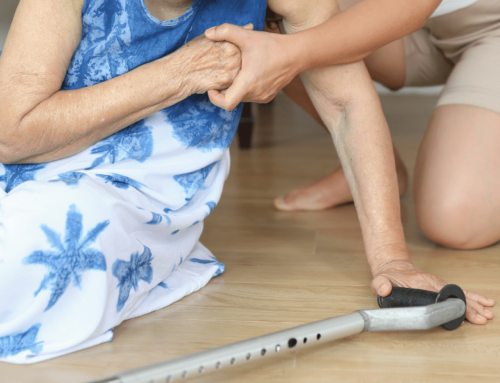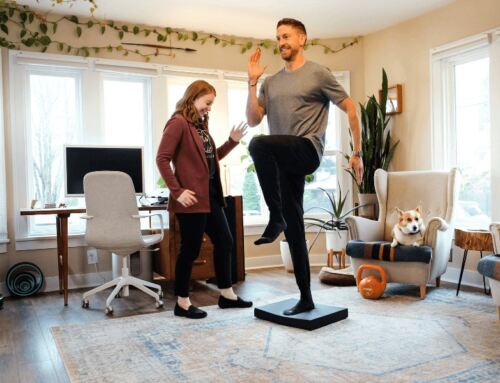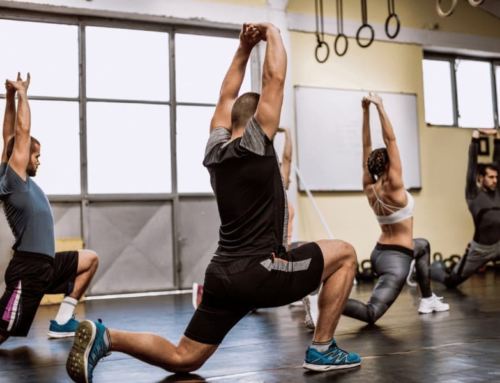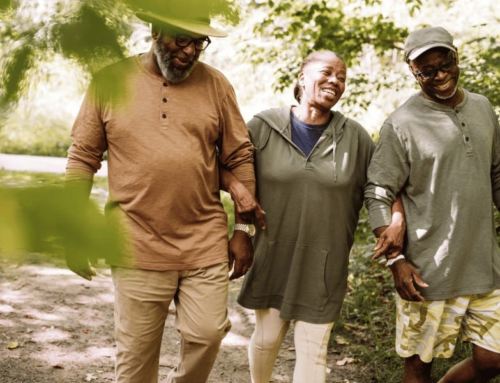Can’t Do a Push Up? Here’s Three Variations We Bet You Can Do
Let’s start with a question—What medication has been proven to have all of the following effects?
✓ Decreased risk of all-cause mortality
✓ Protective effects for hypertension
✓ Reduced metabolic syndrome prevalence
✓ Lesser likelihood of future cardiovascular events
The answer is actually not a pill at all—it’s push ups. Research shows that the ability to do push ups is correlated with better cardiovascular health and increased longevity. Although you may currently think there’s no chance you can successfully complete a push up, we’re here to remind you that there are other variations of this exercise that we bet you can do.
At MovementX, we believe that no matter your age or ability level, the healthier your body can move, the more fully you can live your best life. That’s why our team of specialized physical therapists and personal trainers put together this list of the 3 best variations of the push up exercise that you can practice and officially say “I can do a push up!”
Before Getting Started
While all physical therapists are highly-trained movement health professionals, there are many instances where working with a physical therapist who specializes in the particular area of care you need is best. When you sign up to seek physical therapy care with MovementX, we’ll do an in depth assessment of your needs to make sure that we can provide the most effective and personalized treatment with a specialized physical therapist you can trust. You may already know a MovementX physical therapist near you in one of our many locations who you’d prefer to work with. Regardless, finding a specialist in the care you need is one of the most important factors in attaining the results you want.
Level 1: The Wall Push-Up


Setup: Place your hands on a sturdy wall slightly further than shoulder width apart. Carefully walk your feet back away from the wall until they are about 2-4 feet away from it. Keep your body straight as you support yourself with pressure through your arms and hands.
Movement: Bend your elbows to allow your body to come towards the wall. When your chest approaches the wall and elbows reach a 90deg angle, push back to your start position. Try breathing in when moving towards the wall and out when pushing it away. Your heels may come up off of the floor.
What you should feel: This is great work for both your chest and your shoulders, so you should feel muscle exertion there. Also, this will activate your core, especially at a greater angle / bigger step away from the wall.
What you should not feel: Elbow, wrist, or back pain. If you do, feel free to consult with our team of physical therapists and personal trainers to find out the root cause and what you can do to fix it.
Pro Tips: The placement of your feet in relation to the wall will increase difficulty as you step away from wall and decrease difficulty as you step closer to wall.
Progression criteria to next level of difficulty: Once you can complete 20 wall push-ups with good form and control, progress to level 2!
Level 2: The Elevated Push-Up

Setup: Place your hands on a sturdy chair, couch, countertop, or other elevated object slightly further than shoulder width apart. Carefully walk your feet back away from the object until they are about 3-5 feet away from it. Keep your body straight as you support yourself with pressure through your arms and hands.
Movement: Bend your elbows to allow your body to come downwards as a unit. When your elbows reach a 90deg angle, push back up to your start position. Try breathing in when moving downwards and out when pushing back up. Your heels will likely come up off of the floor.
What you should feel: This is a more challenging load for chest, shoulders, and core because you are working more against gravity than when standing against a wall.
What you should not feel: Elbow, wrist, or back pain.
Pro Tips: The distance of your feet in relation to the elevated object will increase the difficulty of the exercise.
Progression criteria to next level of difficulty: Once you can complete 20 elevated push-ups with good form and control, you’re ready to progress to level 3!
Level 3: The Kneeling Push Up


Setup: Start on the ground with your knees behind your hips and your hands shoulder width apart. While keeping your knees set on the floor, walk your hands out until your hips extend and your back is flat. Your hands should still be just outside shoulder width apart.
Movement: Bend your elbows to allow your body to come down towards the floor. After your elbows reach a 90deg angle, push your body away from the floor to return up to starting position. Again, try breathing in when moving downwards and out when pushing back up from the floor.
What you should feel: Your shoulders, chest, and core are strong and engaged through this movement.
What you should not feel: Pain in your shoulders, back, or knees. Feel free to use a cushion or mat to stay comfortable on your knees!
Pro Tips: The best way to complete this move with good form is to keep your back flat through the entire movement, squeezing your core and gluteals while making sure to breathe.
Progression criteria to next level of difficulty: Once you can complete 20 push-ups on your knees with good form, depth, and control, you’re ready to finally master the full push-up!
The Full Push Up


Setup: Ready to master the full push up? Start in a high plank position on your hands and toes with a straight back, core tucked in (belly button to back of spine), and gluteal muscles squeezed.
Movement: Allow your elbows to bend to around 90deg as your chest lowers down towards the floor. Try to lightly touch your chest to the floor if you can! Then, push back up to the start position and repeat.
What you should feel: Muscle burning and fatigue are appropriate in the chest, upper arms and triceps, and core.
What you should not feel: Pain in your upper back, lower back, shoulders, elbows, or wrists. Your pelvis should not be the first part of your body to touch the floor.
We hope you enjoyed learning how you may in fact be able to master a push up. To learn more variations of other exercises, check out our other articles so you can move your best and live your best.
References:
Yang, Justin & Christophi, Costas & Farioli, Andrea & M. Baur, Dorothee & Moffatt, Steven & W. Zollinger, Terrell & N. Kales, Stefanos. (2019). Association Between Push-up Exercise Capacity and Future Cardiovascular Events Among Active Adult Men. JAMA Network Open. 2. e188341. 10.1001/jamanetworkopen.2018.8341.
Artero, Enrique & Lee, Duck-chul & Lavie, Carl & Vanesa, España-Romero & Sui, Xuemei & S Church, Timothy & N Blair, Steven. (2012). Effects of Muscular Strength on Cardiovascular Risk Factors and Prognosis. Journal of cardiopulmonary rehabilitation and prevention. 32. 10.1097/HCR.0b013e3182642688.
About AgeProof Your Body
AgeProof Your Body is a specialized online exercise community for anyone 60+ who wants to stay healthy, active, and strong from the safety of home. Designed and lead by the trusted physical therapists at MovementX, this virtual community exists to help you gain strength, improve balance and flexibility, and ensure you can move your best and live your best—regardless of age.


